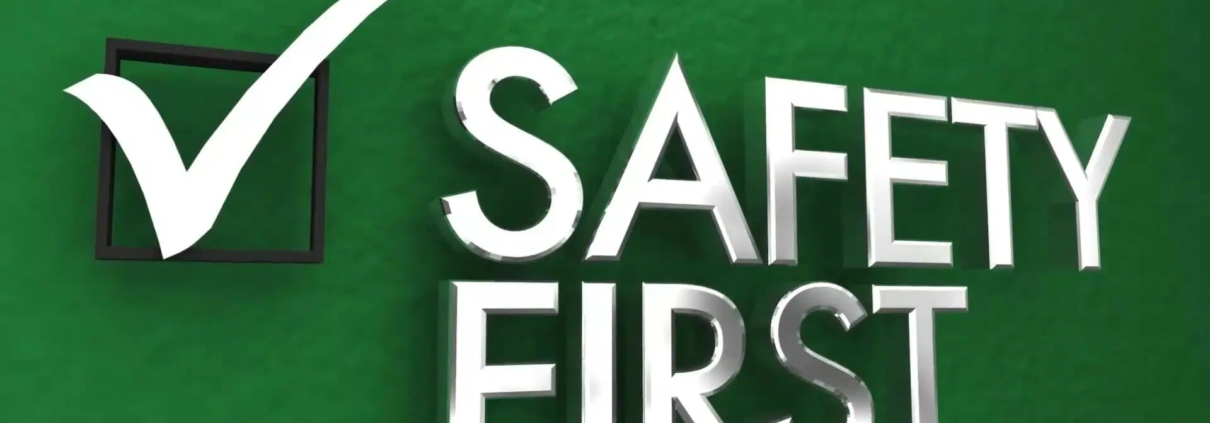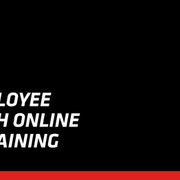8 Characteristics of a Positive Safety Culture
Safety Culture
Your company culture is all about the attitudes, behaviors, and overall mindset of the people. To make a positive safety culture, everyone from the owner to the employees must participate and own it.
The question is, how do you develop and strengthen a positive culture of safety? There are 8 characteristics involved in making your safety culture strong.
Why is a Culture of Safety Important?
Beyond the obvious reasons of regulatory compliance, developing a culture of safety in your workplace has some huge benefits. Companies who work on safety as a mindset for their employees see improvements in areas like
With a strong culture of safety, employees feel more valued and respected, and operations can run smoothly. Does your company have the right characteristics to build your safety mindset?
Characteristic 1: Everyone is Involved
A strong culture of safety starts with leadership valuing the safety of their employees. Managers need to be committed to making the necessary changes to improve the work environment, and they must be ready to model the desired behaviors.
It’s just as important for the rest of your employees to be involved in the process though. Employees should be encouraged to provide feedback and suggestions to improve safety measures.
Characteristic 2: You Have a Clear Company Vision
For a real culture of safety, everyone needs to play a part. It’s important to make each person’s role in maintaining safety clear so each person has a responsibility and knows what it is. Get everyone on the same page with a clear vision.
If you set clear goals and responsibilities any programs or initiatives are easier to move forward with. Having a real vision for what safety looks like in your company will also show that you are serious about making it happen.
Characteristic 3: Everyone is Held Accountable
Employees at all levels of your company need to be held accountable for their roles in managing safety. There should be clear goals and corrective action plans to improve behaviors when protocols are not followed.
These goals and corrective actions should be across the board, including those in leadership. This means it’s important for managers to listen to employees and allow themselves to be held accountable.
Characteristic 4: Open Communication
If you are going to develop a positive safety culture, there needs to be open communication throughout the company. You need a way to make it easy for employees to get updates on new initiatives or new programs, but you also need to make it easy for them to share their suggestions on how to improve things.
Part of this open communication is also about making employees feel safe if they need to report an issue or concern. Employees should not have to fear repercussions for reporting a problem.
Characteristic 5: Employees Are Empowered
It’s not just about making them feel safe if they need to report a problem, employees should also feel safe if they feel they need to put a stop to a dangerous situation. They should be able to say no when a job could put them in danger, and they should feel empowered to make necessary changes.
There needs to be a system in place that allows employees to make those decisions and have them reviewed. That way real changes can be made to make the workplace safer. This also means that any issues that are brought up by employees are dealt with in a timely manner.
Characteristic 6: Consistent, Ongoing Training is Provided
To really change behaviors and get everyone on the same page, you need a consistent and ongoing training program. You can make training on important safety issues part of your orientation training and provide regular training throughout the year to keep these important topics top of mind.
A training program allows you to share best practices and gives employees an idea of what is expected of them. You can make this process simpler for yourself and your employees with an online training management system, so employees can complete the training at their convenience without disrupting workflows.
Characteristic 7: Safety Results are Regularly Measured
If you want to develop a strong safety culture, you have to have measurable goals and the tools in place to track your progress. An easy place to start is with measuring the effectiveness of your training program. The Infinit-I Workforce Solutions platform has tracking tools in place that can help you keep up with progress and results.
Other areas you track will depend on your current needs and the goals you put in place. This can include tracking the number of workplace incidents or violations. Just make sure you understand what areas are important to reaching your goals.
Character 8: Successes Are Celebrated
Developing a safety culture takes time and patience, so make sure you are celebrating the successes along the way. This helps keep everyone motivated to keep safety initiatives going.
Call out good behavior, and even consider giving rewards to people who are doing what they need to make safety a culture. Others will want to get that same praise, making it easier to get everyone on board.
Keep Your Culture of Safety Moving Forward
Safety culture is a commitment, and improvements can always be made. While you celebrate your safety successes, make sure you are always looking for ways you can make the culture of safety even stronger.
Are you ready to take the first step in developing a positive safety culture? Set up a free demo of the Infinit-I Workforce Solutions system to see how online training management can simplify your training program and provide the tools you need to start tracking your success.











